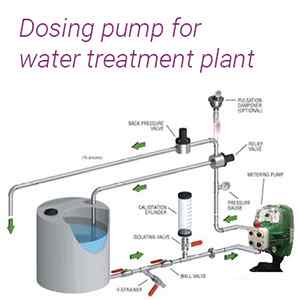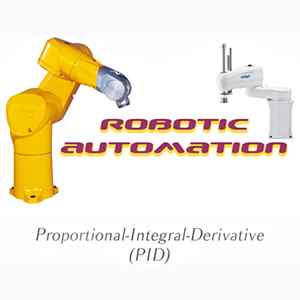Articles
Dosing Pump For Water Treatment Plant

Definition
A dosing pump is a positive displacement pump designed to transport very precise flow rates of a chemical or other substance into a fluid stream. The mechanism of this industrial pump involves drawing a measured quantity of fluid into the chamber and then injecting this volume rate into the container being dosed. As a function, a dosing pump is designed to be reliable so once it is properly set up; it should look after itself and not require large amounts of input. Dosing pumps are used for automating fluid flow in many applications including pharmaceutical water treatment plants.
Parts of a Dosing Apparatus
Although the parts of a dosing apparatus may vary depending on the brand and application, the major components based on functionality and principle can be outlined as:
- Tank – The container to be dosed.
- Foot valve – A non-return valve attached to the suction line and placed into the drum of the product. It is kept at the bottom of the drum, and has a Float Switch attached to it for checking product availability and alarming when the latter runs out.
- Dosing Pump – Generally made corrosion resistant PVC, PE and other plastics, rubbers and even stainless steel.
- The suction line attaches to its inlet while a dosing line attaches to the suction line.
- Dosing Line – Generally constructed from rigid PVC or PE tube or a reinforced hose, this component can have a variety of bleed, pressure relief or air release valves included into it.
- Injector – A delivery nozzle that pushes out the precise flux of product supplied by the dosing pump into the line. It is designed to overcome the pressure of the dosing pump.
- The product is released in pulses (or flow rate). The non-return valve has a self-actuated mechanism that stops the liquid in the delivery line from going up after the required flux rate is delivered or once the pump stop. The injector also ensures that the product is delivered to the middle of the flow rather than the side wall to avoid wastage of product, for thorough mixing, and to avoid damaging the walls especially when the fluids are acids or peroxides.
- Control System – Modern plants use control systems and software to ensure the dosing pump is accurate and to provide automation. SCADA systems and other central control systems with sensors for pH, chlorine, and similar and variable rate control are used to this end.
| Also Read: Top 10 Global Manufacturers and Suppliers of Dosing Pumps |
Types of Dosing pump for water treatment plant
There are 4 different types of dosing pumps designed based on their action and pumping mechanism:
- Diaphragm-Type Constant Injection Pump – This is a pump chamber filled and emptied by a piston. It has a diaphragm and inlet and outlet valves.
- When the chamber is full, the dosed volume is injected out at a constant flow rate, generally in the range of 6 – 250 l/hr.
- Diaphragm-Type Pulse Injection – This method employs a diaphragm mechanism. This pump is controlled by a solenoid coil that sucks in and injects the chemical in pulses. The time-gap between the pulses provide the control of flow rate.
- This pump is generally less accurate than other types. However, they are preferred for their simplicity both mechanically and electrically, and relative inexpensiveness.
- Lobe-Type Pumps – This design allows the flux to pass through a set of meshing-gear-type impellers. Due to the volume rate passing between these impellers not being as accurate as other diaphragm pumps and the impellers being quite susceptible to wearing, these pumps work to their full potential only when the flux is highly viscous and self-lubricating (to minimize the wear).
- Peristaltic Pumps – Peristaltic pumps consist of a flexible tube for carrying the product. This tube has a semi-circular cross section. These pumps are used widely in the medical industry as they are easily sterilized, and the pump mechanism can be quickly changed out if it is contaminated or damaged. Peristaltic pumps are highly accurate. However, they wear out quickly; and can’t handle pumping into a high pressure stream as they can only handle up to the burst pressure of the flexible tube mentioned in the beginning.
Applications of Dosing pump for water treatment plant
Dosing pumps are used widely across many industries. It is also an essential automation component in several industries that handle large quantities of fluids, including water treatment, agriculture, pharmaceutical, food processing, and mining. In waste water treatment, dosing pumps are used for injecting a product such as chlorine into a water or fluid stream to cause a chemical reaction. This reaction either maintains pH to a desired range or kills pathogens.
In effluent treatment, dosing pumps carry flocculants to separate solids from liquids. Other applications of dosing pumps include preparation of highly consistent glue or additives for paper & pulp industry and corrosion treatment in high-pressure and high-temperature boilers and smelter feeds.







